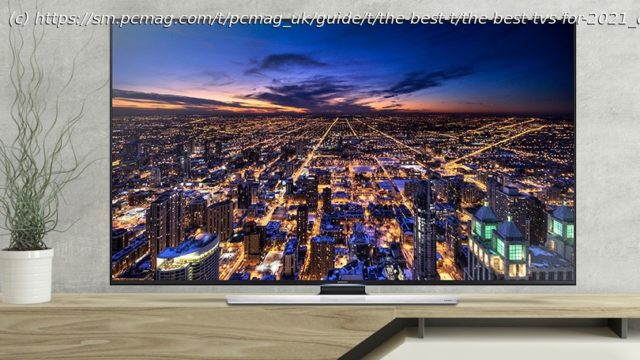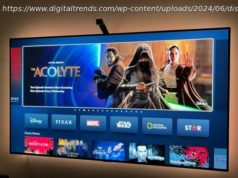If you want a new television, you now have more options than ever, including HD, 4K, and smart TV sets. No matter your budget or the size of screen you want, here’s what to look for when shopping, along with the best TVs we’ve tested.
The TV market has been changing a lot recently, both in terms of technology and price. New types of screens with organic light-emitting diode (OLED) panels and ultra-high definition ( UHD, or 4K) is replacing the 1080p standard we’ve become used to. But which one should you buy? Here are the main points to consider when shopping for a new set, as well as the best TVs we’ve tested. The Best 4K TVs The TV resolution question used to be between the options of 720p (1,280 by 720 resolution, or just under one million pixels) and 1080p (1,920 by 1,080, or just over two million pixels). Then it moved on to 1080p versus Ultra HD, or 4K (3,840 by 2,160, with eight million pixels). Now it’s no longer a question: 4K has become the standard for medium-sized and larger televisions from every major manufacturer. The higher resolution no longer commands a huge premium, and you can now find a 65-inch 4K TV for under $1,000. Realistically, you’d be hard-pressed to find a TV from a major brand larger than 40 inches that isn’t 4K. In fact, every TV on this list is 4K. Nearly all 4K TVs have connected features that let you stream 4K content. The Roku TV, Amazon Fire TV, and Android TV platforms have enabled many TV brands to add smart TV functions without developing their own systems like LG and Samsung do. These platforms are full of features and offer access to most major streaming services, along with features like voice assistants, local media streaming, and a variety of apps. If you can’t find the apps or services you want on your TV, you can connect a separate 4K media streamer to an HDMI 2.0 port. Most recently, support for Apple AirPlay 2 is being added to several new TVs (as well as older models) from LG, Samsung, Sony, and Vizio. This lets you use your iPhone or iPad to stream content from iTunes to the TV. Apple is also releasing the Apple TV app with its Apple TV+ service on many smart TV platforms. This means you can watch Apple video content on nearly any TV without needing an Apple TV 4K, which was previously necessary. 4K content is now freely available on many streaming services and on Ultra HD Blu-ray discs, even if it hasn’t been adopted by broadcast or cable TV services yet. If you have a very fast internet connection, you can watch some excellent shows on Amazon and Netflix in 4K (and most new original programming on the services is being produced at that resolution). New films are also coming out digitally in 4K through various on-demand streaming services like Vudu. Ultra HD Blu-ray discs are a relatively new physical media format similar to Blu-ray discs. Don’t expect to play them on your current Blu-ray player, though; you need a dedicated Ultra HD Blu-ray player, a Microsoft Xbox Series X, or a Sony PlayStation 5 to handle the format. The good news is that it stores 4K video with HDR (explained below), and even can handle advanced surround sound audio if your speaker system supports it. Since it’s a physical media format, you don’t need to worry about your internet connection to be sure you’re getting 4K, either. Should I Wait for 8K? No. That’s it. Don’t worry about 8K for now. You might have heard about it, and the new HDMI 2.1 standard is designed to support it.8K is 7,680 by 4,320 resolution, or four times the number of pixels of 4K.8K TVs are currently available as premium models for significantly more money than their 4K equivalents (including OLED TVs, which are already pricier), but they aren’t going to be meaningful for consumers for a few more years, and there’s little reason to consider buying one yet. There’s no consumer-ready 8K media available, and no major studios or distributors have even talked about releasing 8K movies or shows so far. There aren’t even physical or streaming media standards that let 8K video be commercially released. Even if you can find an 8K TV, at best you’ll be able to watch upconverted 4K video on it. So for the time being, don’t worry about 8K suddenly replacing 4K. It won’t happen anytime soon. High Dynamic Range (HDR) While 4K is now established as a no-brainer, there’s a new next-step video technology to consider when shopping for a TV. High dynamic range ( HDR) content gives much more information to the display than a standard video signal. The resolution remains the same as UHD, but the range of color and amount of light each pixel can produce is significantly broader. Thanks to improving LCD and OLED panel technology, high-end televisions can display wider color gamuts and finer gradients of light and dark than before. Standard video was built around the limitations of older televisions, intentionally using a set range of color and light information in the signal. HDR breaks those limitations and uses expanded ranges with finer values between them. Basically, this means HDR displays can produce more colors and more shades of gray (or, rather, luminance values) than standard dynamic range displays. HDR is still a developing technology, and it’s easy to be confused by it. There are two major HDR standards out there with commercially available content: HDR10 and Dolby Vision. HDR10 is an open platform that uses 10-bit color values. The UHD Alliance certifies televisions that meet the HDR10 standard, along with minimum brightness and contrast ratios, as UltraHD Premium. Dolby Vision is a closed standard used by Dolby, which supports 12-bit color and determines ranges in the signal it provides to a display on the fly, based on the display itself and the needs of the scene. Televisions that support Dolby Vision will note so on their packaging. Some other HDR standards and variants are also out there, but they’ve yet to see the broad acceptance in TVs that HDR10 and Dolby Vision have. Hybrid Log Gamma (HLG) is a standard developed by the BBC and Japanese broadcaster NHK, which is backward compatible with standard dynamic range TVs. Meanwhile, Samsung and Amazon Video are working on HDR10+, which is said to add variable metadata to brightness, changing the range of bright and dark that video can display from scene to scene. HDR content is generally rarer than SDR UHD content, but it’s still widely available, especially for new shows and films on major streaming services.






